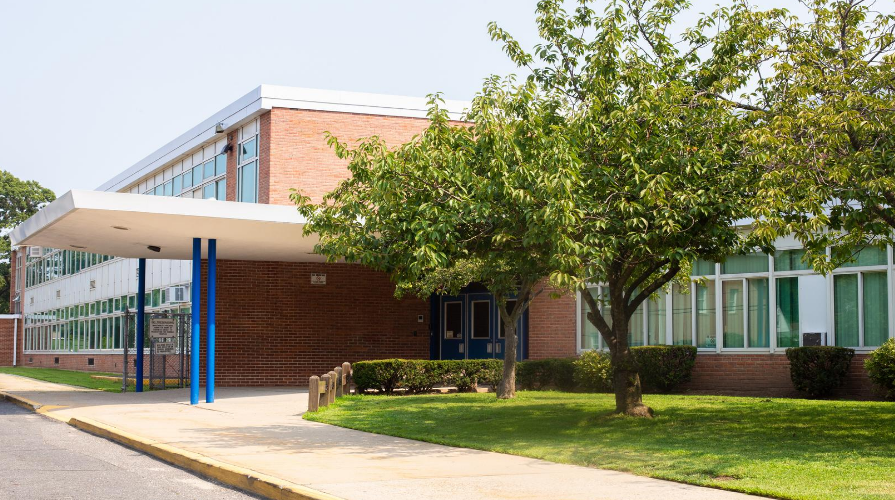School Bonds Are Key to Student Success
Imagine if mortgages weren’t available to prospective homebuyers. Or if homeowners couldn’t finance renovations. Trying to save up all the money before building, buying, or fixing a house would be impossible for most people, who would never have all the funds needed in their regular budgets to cover such large expenses.
School districts aren’t that different – relying on bonds (rather than mortgages) to help them fund large capital expenses, like new schools and facilities, as well as renovations and technology.
In fact, the ability to access funds for capital improvement projects through the issuance of bonds has played a big role in Texas public education since 1854. That year the Legislature assigned $2 million in bonds to what was then known as the “special school fund” and what would eventually become the Permanent School Fund.
Today, bonds backed by the Permanent School Fund continue to help school districts finance building projects while also saving taxpayers about $150 million each year through lower interest rates.
Funding Needed for Safety, Upgrades
Access to funding through bonds has never been more important for public school districts, which rely on these bonds to build new schools in fast-growth areas or to upgrade aging facilities to meet state requirements intended to ensure safe learning environments for students.
Yet it’s important to emphasize that these bonds are only available to districts if they are approved at the ballot box by local voters – reflecting a grassroots and democratic process in every school community across the state. In Texas, school districts can’t move forward with selling bonds to finance their building projects unless they win voter support in either a May or November election.
This accountability to voters has worked successfully for decades. Thanks to engaged and involved citizens in all 1,024 school districts in Texas, getting a bond referendum passed isn’t a rubber-stamp process. During the May 2024 election, voters said no to nearly half of all the bond propositions put on their ballots.
There’s no greater reckoning for a school district than coming to terms with why a bond did not pass. Usually, it’s a sign that voters didn’t get all their questions answered or had concerns about specific building projects or proposed tax rates.
Building Schools Requires Building Trust
On the front lines of those conversations are the more than 7,000 elected school board members, whose fundamental job is to listen to their communities. Simply put, school districts can’t build facilities in Texas if they haven’t already built trust with their voters.
In addition to local checks and balances, there’s also a long list of state and federal laws that bring oversight, transparency and taxpayer protections to school bond issues. According to the TEA, the Permanent School Fund’s Bond Guarantee Program has never had a district default on its bond payments in the history of that program.
That track record of success shows a system that is working. Having access to bond funds through an election referendum is key to school districts being able to keep up with expenditures related to facility needs and maintenance.
Not surprisingly, school construction is the nation's second-largest capital investment for state and local governments, surpassed only by road construction.
Distinct Expenses, Separate Budgets
These large building and capital projects even get their own budget, known in the Texas school finance world as Interest and Sinking (I&S). Daily operations, like salaries, utilities, transportation and instructional programs are reflected in a district’s Maintenance and Operations (M&O) budget. Districts are prohibited from using I&S funds for M&O items.
Unfortunately, trying to save and set aside money for new schools and renovations in a district’s M&O budget is not an option, as those funds already have an important job to do – financing the people and programs needed to educate students. For school districts, there’s typically not money to spare in that budget, especially amid the strain of rising prices and stagnant state funding.
Nor should districts try to finance planned capital projects from their Fund Balance. Just like a homeowner shouldn’t dip into their rainy-day fund unless there’s an emergency, a district needs to keep its Fund Balance in reserve for unexpected expenses and to cover operations before state funding is allocated, too.
Accountability, Value, and Security
In short, school bonds are an essential financing mechanism for districts to build new facilities and renovate existing ones. Especially today, districts can’t delay projects to meet state-mandated school safety requirements or accommodate new technology.
However, with all bonds requiring approval at the ballot box and many districts relying on community input from bond committees, voters can be assured there’s built-in accountability and community involvement to ensure these funds are spent on local priorities and adhere to all state and federal laws. Additionally, with the support of the Permanent School Fund, there’s the added value of lower interest rates, saving taxpayers millions of dollars each year.
Now is not the time to limit the ability of Texas school districts to access bond referendums that meet the needs of their local communities and prioritize providing safe and secure schools. Our 5.5 million Texas public school children can’t afford to wait for facilities that live up to the challenges of today’s world, especially when voters already have the final say on those projects at the ballot box.
Download PDFAdditional Resources
- Toolkit for Strong Budget Discussions (TASB login required)
- How to Clarify Misconceptions and Gain Trust for School Bonds
- School District Bond Election Process (TASB login required)
- Overview of School District Bond Issuance (TASB login required)
- 7 Steps to Successfully Passing Your Next School Bond





